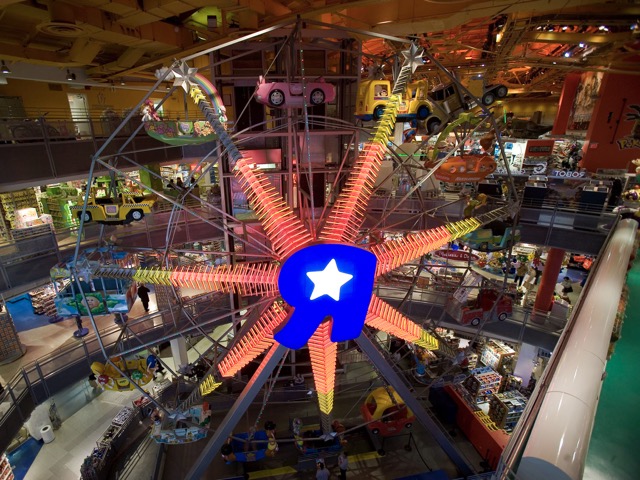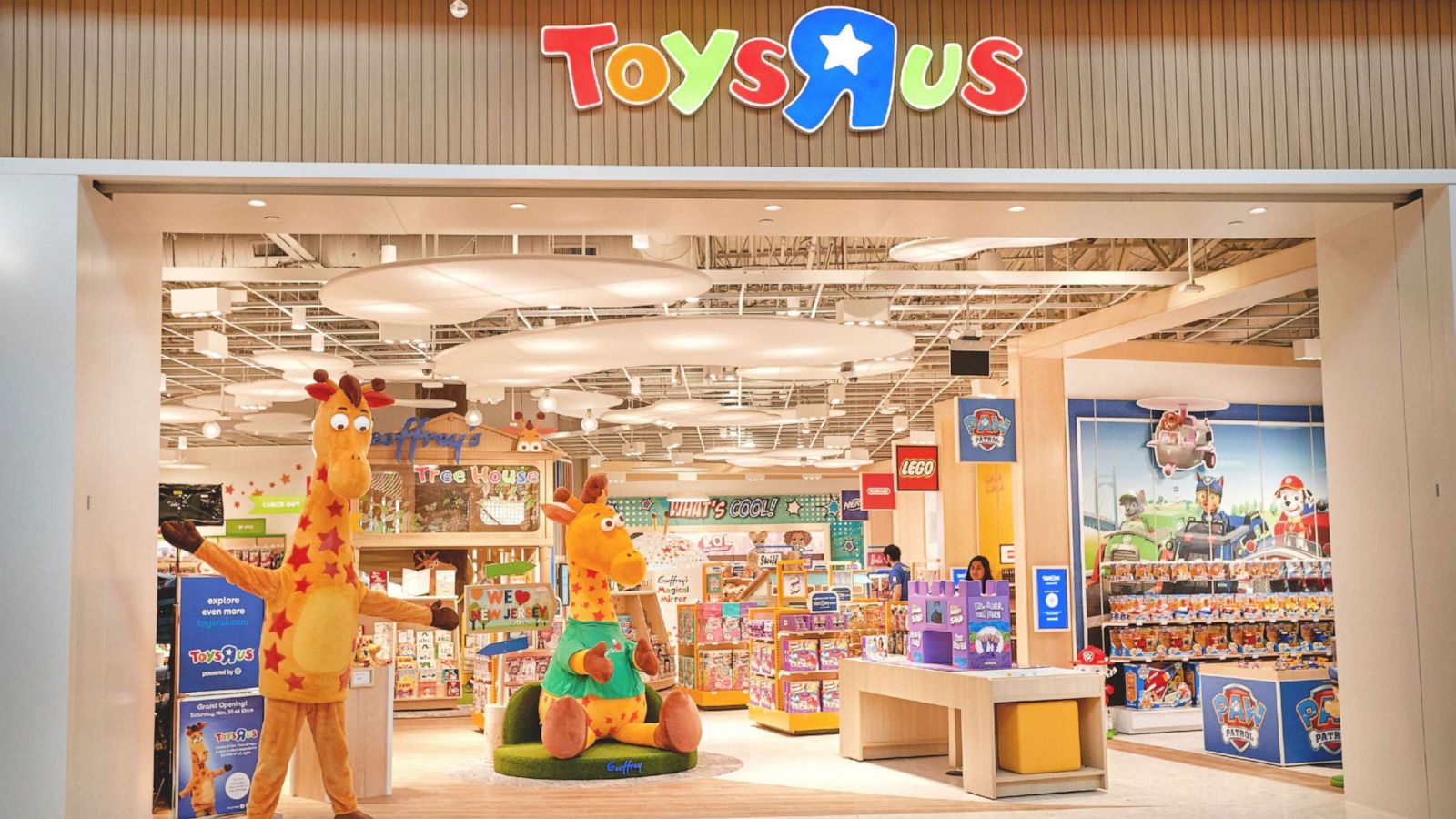Toys “R” Us is a legendary toy store that has been a part of American culture for over seven decades. From its humble beginnings as a baby furniture shop to its global expansion and bankruptcy, the company has witnessed the ups and downs of the toy industry and the changing tastes of generations of children. Now, under new ownership and with a new vision, Toys “R” Us is making a comeback in the U.S. market, hoping to recapture the magic and nostalgia of its iconic brand.
The Early Years: A Baby Boom Business
The story of Toys “R” Us begins in 1948, when Charles Lazarus, a young veteran of World War II, opened a store called Children’s Bargain Town in Washington, D.C. He had a hunch that the post-war baby boom would create a demand for baby products, and he decided to sell cribs, carriages, strollers, high chairs, and everything else for the baby. His instincts proved right, and his business grew steadily.
However, Lazarus soon realized that his customers did not come back for more baby furniture when they had their second or third child. He decided to add some toys to his inventory, starting with a few inexpensive items. He noticed that the toys sold well, and that children wanted more and more of them. He also observed that parents were willing to spend more on toys than on furniture, and that toys had a higher profit margin.
Lazarus decided to shift his focus from baby goods to toys, and in 1957, he renamed his company Toys “R” Us, with a backward “R” to give the impression that a child wrote it. He also created the first ever big-box toy store, a supermarket-style approach that offered a huge selection of thousands of different toys at low prices. He was able to negotiate better deals with toy manufacturers and distributors, and he passed the savings on to his customers. He also pioneered the concept of self-service, allowing children and parents to browse and choose their own toys, rather than relying on sales clerks.
Lazarus’s innovative strategy was a huge success, and he soon opened more stores across the country. He also expanded his product range to include books, games, bicycles, sporting goods, and other items that appealed to children of all ages. He also introduced Geoffrey the Giraffe as the company’s mascot, and created a catchy jingle that proclaimed “I don’t want to grow up, I’m a Toys “R” Us kid.”
The Golden Age: A Toy Empire
By the 1960s and 1970s, Toys “R” Us had become the dominant force in the toy industry, and the ultimate destination for children and their families. The company played a significant role in popularizing some of the most iconic toys of the era, such as Mr. Potato Head, Barbie, G.I. Joe, Lego, Hot Wheels, Star Wars, Cabbage Patch Kids, and many more. The company also benefited from the rise of television, which helped to advertise its products and create a demand for licensed merchandise from movies, cartoons, and celebrities.
Toys “R” Us also expanded internationally, opening stores in Canada, Europe, Asia, and Australia. The company also diversified into other related businesses, such as Babies “R” Us, Kids “R” Us, and Imaginarium. By the 1980s, Toys “R” Us was the largest toy retailer in the world, with over 1,000 stores and annual sales of over $5 billion. The company was also a leader in philanthropy, supporting various causes such as children’s health, education, and environmental protection.
The Decline: A Changing Market
However, by the 1990s and 2000s, Toys “R” Us began to face new challenges and competitors. The toy industry became more fragmented and diversified, with new trends and technologies emerging every year. Children’s preferences and interests also changed, as they became more exposed to digital media and entertainment. Toys “R” Us struggled to keep up with the fast-paced and dynamic market, and to maintain its relevance and appeal to its customers.
The company also faced increasing competition from mass merchants and online retailers, such as Walmart, Target, and Amazon, which offered lower prices, wider selections, and more convenience. Toys “R” Us lost its competitive edge and market share, and its sales and profits declined. The company also accumulated a large debt, as a result of a leveraged buyout in 2005 by a group of private equity firms. The debt burden limited the company’s ability to invest in its stores, inventory, and innovation, and made it more vulnerable to economic downturns and consumer trends.
In 2017, Toys “R” Us filed for bankruptcy, unable to cope with its financial and operational challenges. The company tried to restructure and reorganize its business, but failed to find a buyer or a viable solution. In 2018, the company announced the closure and liquidation of all its U.S. stores, as well as its stores in the U.K. and Australia. The company also sold or transferred its operations in other countries to third parties. The bankruptcy and closure of Toys “R” Us was a sad and shocking event for many people, who had grown up with the brand and had fond memories of its stores and products.

The Comeback: A New Hope
However, the story of Toys “R” Us is not over yet. In 2018, a group of investors and creditors acquired the company’s assets and intellectual property, and formed a new entity called Tru Kids Brands. The new company’s mission is to revive and reinvent the Toys “R” Us brand, and to bring back the joy and wonder of toys to children and families.
Since then, Tru Kids Brands has been working on various initiatives and partnerships to restore and relaunch Toys “R” Us in the U.S. and other markets. Some of these include:
- Opening a new flagship store at the American Dream mall in New Jersey in 2019, featuring interactive and experiential elements, such as a two-story slide, a cafe, and an ice cream shop.
- Launching a new e-commerce website in 2019, in collaboration with Target, which provides the product assortment, fulfillment, and customer service.
- Opening two smaller-format stores in Texas and New Jersey in 2019, with a focus on curated products, play areas, and events.
- Partnering with Macy’s in 2021, to open more than 400 Toys “R” Us shops within Macy’s department stores across the country, starting from the holiday season.
- Partnering with WHP Global in 2021, to open up to 24 new flagship stores in the U.S. in 2024, as well as additional stores in airports and cruise ships, under the theme of “Air, Land, and Sea”.
- Expanding and growing its international presence, with over 1,400 stores and e-commerce sites in 31 countries, operated by local partners and franchisees.
The new Toys “R” Us is aiming to create a modern and engaging shopping experience for its customers, while staying true to its heritage and values. The company is also hoping to reconnect with its loyal fans and customers, and to attract new generations of toy lovers. The company’s motto is “Today we play”, which reflects its vision of bringing fun and playfulness to everyone’s lives.
Conclusion: A Toy Story
Toys “R” Us is a remarkable and resilient brand that has survived and adapted to many changes and challenges over the years. The company has been a pioneer and a leader in the toy industry, and a cultural icon and a source of joy for millions of people. The company has also faced difficulties and setbacks, and has gone through a dramatic and painful downfall. But the company has not given up, and has found new ways and opportunities to reinvent itself and to make a comeback.
The story of Toys “R” Us is not only a story of a business, but also a story of a passion, a dream, and a legacy. It is a story of how toys can inspire, educate, and entertain children and adults alike, and how they can bring happiness and magic to the world. It is a story that is still being written, and that will continue to surprise and delight us. As the company’s founder, Charles Lazarus, once said, “The toy business is fun. It’s a happy business.”







